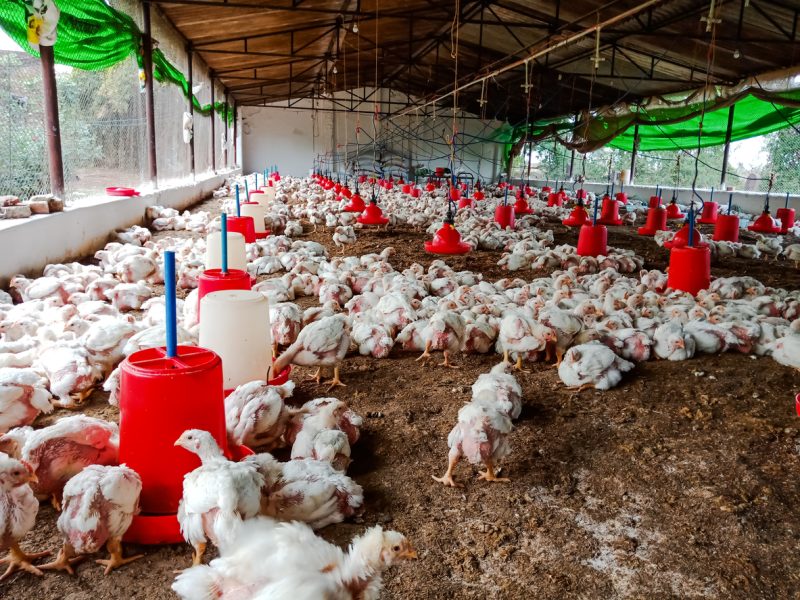
Poultry sector worried over diversion of maize to ethanol production
Though protein-rich solids left after alcohol production, known as Distillers’ Dried Grains with Solubles, are used to feed poultry, high aflatoxin levels in Indian maize deters their use

The diversion of maize to produce ethanol in order to make it available to be blended with petrol has left a trail of concern in India’s poultry industry, with many worrying over the reduced availability of the cereal for feed production. Though protein-rich solids left after alcohol production, known as Distillers’ Dried Grains with Solubles (DDGS), are used to feed poultry, high aflatoxin levels in Indian maize deters their use.
India produces about 32 million tonnes of maize or corn. While its production growth is almost flat, demand from the poultry industry, about 16 million tonnes annually, is rising by 1 million tonnes, KG Anand, General Manager of Venkateshwara Hatcheries, said in a video interview with The Federal.
Anand said DDGS from rice wash used for producing alcohol is acceptable as a feed, but Indian maize-drying methods need to be mechanised to eliminate aflatoxins. While soybean is available, its price fluctuates with international demand and squeezes the wafer-thin margins of Indian poultry farmers, said Anand. He added that the industry was pushing the government to allow the cultivation of genetically-modified soybean and maize, which have higher productivity.
Also read: India to supply 20% ethanol blended petrol from April 2023; PM launches plant in Panipat
While India produces a large quantity of cottonseed oil cake, the presence of gossypol, which helps the cotton plant ward off pests, limits its use in the poultry industry. In mustard oil cake, the presence of glucosinolates, which give mustard its pungency, are off-putting for birds.
India ranks fifth in broiler production
India is the third largest producer of eggs and ranks fifth in broiler production. Egg production is the domain of standalone producers, who can source feed – broken rice, wheat, maize, bajra and soybean – locally. Eggs are produced and sold throughout the year, so if they lose on one day, standalone producers can gain on other days. But broilers are brought into the market in a 40-day cycle and if prices are depressed on the day when the birds are sold, farmers cannot recoup the losses easily. Corporates have, therefore, taken over broiler production. They have contract breeding franchisees who are paid a conversion fee, while the franchisers supply the day-old chicks, the feed and the vaccines and bear the market risk.
Harsha Kumar Shetty, who looks after the sale of bird parents at Venkateshwara Hatcheries, allayed fears of the over-use of antibiotics. He said the industry adheres to norms regarding dosage and follows the prescribed regimen. Overuse will drive up costs in an industry where margins are thin. Indian chickens are also bred in open houses unlike in Europe and the US where they are housed in climate-controlled closed spaces. There, the birds bulk up so fast that their feet cannot support the weight and the birds lie on their sides in their own poop, which generates ulcer-causing ammonia build-up. In Indian open houses, there is little ammonia build-up. Indian corporates also invest in hygiene, and disease prevention is emphasised. This has resulted in the decrease of mortality rates over time, from 10 per cent to 2 per cent, Anand said.
Farm eggs more nutritious?
The industry veterans explained why farm eggs are preferable to eggs of country chicken. Though the latter are tastier, they may not be as nutritious because the birds feed on muck. In the farms, nutritious feed is given. The eggs are also not fertilised, so they keep longer and are of better quality unlike country eggs, which are fertilised, and might have blood spots if kept for long.
Also read: Unemployment in India hits 16-month high of 8.3% in December
While much is made of free-range eggs, relying on them to meet India’s egg needs is not practical. The productivity of free range hens is 60-80 eggs per year while farm layers yield 330 eggs a year on average. To produce free range eggs in the quantities India requires would mean a vast increase in land use.
The executives also supported the European prohibition on washing of eggs at the farm before they are sold (a practice that is required in the US). Eggshells being porous, contamination can seep through when washed. The quality of water in India at the farms is also doubtful, they said.
Explaining why the industry is opposed to the import of chicken legs from the US, the two executives said leg quarters are discarded in the US as consumers there prefer breast meat. Poultry farmers are also highly subsidised there, they said. The US was welcome to export whole dressed birds but import of chicken legs at very low prices would destroy the Indian poultry industry. In other words, Indian poultry farmers can compete with farmers in the European Union, the US and Argentina, but not with their national treasures.

